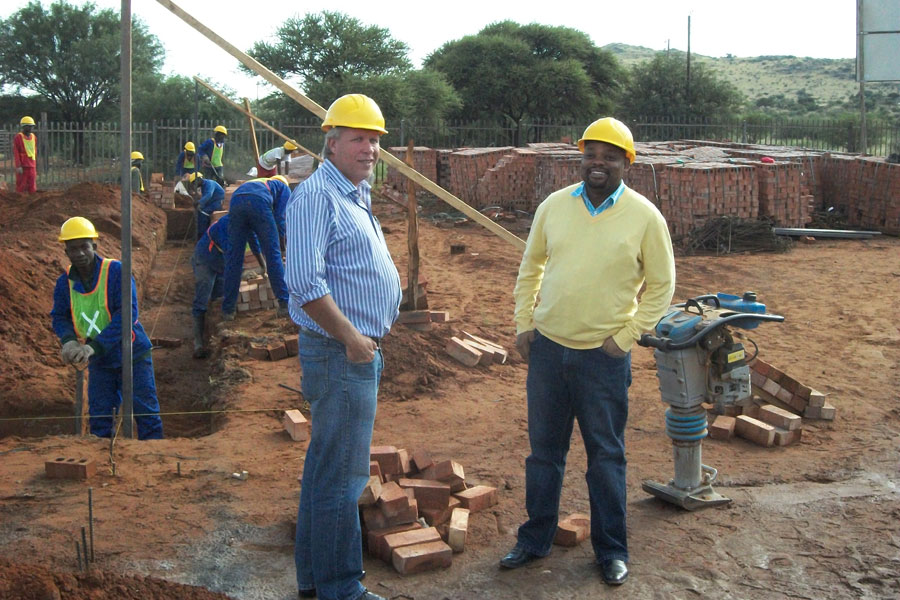DEVELOPMENTS
Helping a South African Mining Giant Invest for Results in its Local Communities
Aug 27, 2014
The Sishen Iron Ore Company Community Development Trust faced a fabulous opportunity—and a daunting challenge. A beneficiary of mining giant Anglo American’s Kumba Iron Ore Company, the trust recently came into a sooner-than-expected windfall of dividend income. This annuity could continue for 20 years or more, depending on the life of the company assets, efficient operation of the mine, and global demand for iron ore.
Established in 2006 by Kumba, one of the world’s largest iron ore producers, the trust was determined that its money make a difference in its beneficiary communities beyond the 20-year life of the mine. So in September 2011, it engaged DAI’s Johannesburg-based team to develop a long-term strategy called Vision 2030 to guide the trust’s decisions. We were asked to help the trust achieve systemic change rather than merely consumptive expenditure. We sought to ensure that the trust diversifies its income and spending and follows a sustainable investment strategy while meeting the social needs of the beneficiary communities.

These communities are those around the Sishen, Sishen South, and Thabazimbi mines, which are home to 300,000 people, mostly black families and small businesses that support the mining operations but have historically lagged in economic and social opportunity.
Agreement was reached on the key impacts required to achieve the trust’s vision:
- Increased incomes and reduced poverty in the targeted communities;
- Improved educational quality and outcomes;
- Improved, economically relevant skills available to the industry;
- Improved social and living conditions for all residents (both able and disabled); and
- A more diversified and inclusive economy.
Crafting The Plan
Each community targeted by the “Super Trust”—as it came to be called—had its own character, challenges, and potential. To bring the Super Trust’s vision into focus, our team convened specialists from technical fields including education, business, health, agriculture, and welfare. Strong leaders and project management experts, from inside and outside DAI, delivered a keen international perspective.
After some weeks of collecting data—based on desktop research, extensive field visits, and stakeholder engagements—we drafted a report and strategy framework, then spent many hours debating the information until the final, feasible recommendations were formulated.
Critical, of course, were systemic issues affecting the beneficiary communities—problems such as weak government institutions, skills shortages, backlogs on service infrastructure (schools and clinics, for example), insufficient infrastructure for growth such as internet bandwidth and electricity, and entrenched inequality.
We soon realized that education and skills were fundamental, and accordingly we were tasked with an additional assignment in preparing the strategy: a skills audit of the broader Northern Cape and the beneficiary communities—Gamagara, John Taolo Gaetsesewe, Tsantsabane, and the Thabazimbi area in Limpopo.
Ultimately, the strategy document—divided into short- (1–2 year), medium- (3–5 year), and long-term interventions (more than five years)—laid out a Vision 2030 premised on sustainability, partnership with other institutions, and advocacy and “debottlenecking” by the Super Trust, which is designed to catalyze economic diversification, improve educational outcomes and conditions, develop economically relevant skills, improve social and living conditions, and advocate for economic inclusion.
Building Local Management Capacity
The Super Trust works with five beneficiary organizations, or local trusts, which are located in each of the mining areas and entitled to receive a portion of the annual income received:
- Gamagara Development Forum (regional)
- Kgalagadi Poverty Node Charitable Trust (regional)
- Maphalane Disabled Children’s Trust (Northern Cape province)
- Tsantsabane Community Development Forum (regional)
- Thabazimbi Community Development Forum (regional)
These local trusts will propose and implement local development initiatives, seeking to make an impact locally while also undergoing annual audits in order to secure continued funding.
The Super Trust’s mandate to review and approve the local trusts’ technical and financial projections unveiled another challenge: limited capacity in the sub-trusts. As a result, Super Trust staff were required to invest significant time and energy to get sub-trust proposals ready for submission to its Board. It also became increasingly taxing for the Super Trust to monitor progress in implementing approved projects, exposing it to major risks in terms of compliance, implementation, and fraud.
During the strategy process, it had been recommended that a project management unit (PMU) be established to support the project application and approval process. DAI provided this initial PMU to the Super Trust as an implementing partner for infrastructure projects—directing them, training staff, guiding thinking, and building capacity at Super Trust and local trust levels to mitigate financial and technical risk.
This capacity building effort proved particularly important to the Super Trust, as the PMU served to ensure that project management, governance, and technical skills were transferred to the permanent staff of the beneficiary trusts, as well as to the construction contractors at the sites. Accordingly, the Super Trust further contracted DAI to establish and operate a PMU for three years, thus freeing the Super Trust to manage its funds and tend to broader relationships, including with the parent mining company.
Today, the PMU is driving development of procedural manuals relating to project approvals, construction, health and safety, and environmental and legal compliance. During preapproval, the unit makes sure that projects offer a strategic fit, a sound business case, relevant approvals (environmental impact assessment, regulatory requirements), stakeholder engagement (municipalities and local departments), realistic pricing, and site visits. After approval, the unit ensures adherence to procedure, governance requirements, and quality assurance during construction.
Vision 2030 came together because the sub-trusts, Sishen Iron Ore executives and officials, and Super Trust management and Trustees worked together. Extensive consultations with other economic and political players, such as mining companies, businesses, and local and provincial governments, around issues of skills, investments, and government policies were also key to the initiative’s promising start. We look forward to continued collaboration in pursuit of our collective vision